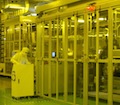JAPAN: Panasonic announces third-quarter loss, confirms two TV panel factories to stop production
Increased restructuring costs could lead to £3.5bn loss in current financial year, as plasma and LCD factories set to halt


As reported last week, Panasonic is set to stop production of TV panels at two of its factories in Japan: one making LCDs, and one plasma.
It's part of a plan to restructure the company's loss-making TV division, and comes as it makes a huge cut in its forecast TV sales for the current financial year.
Originally Panasonic expected to sell 25m sets this year, but that number has now been slashed to just 19m.
Restructuring of the TV division is expected to cost some Y265bn (£2.2bn), which will be part of a total company-wide restructuring bill now expected to be Y560bn (£4.6bn) – way beyond the Y170bn (£1.4bn) originally planned.
It's also thought an LCD panel factory in Shanghai will be closed, Panasonic boss Fumio Ohtsubo saying that in future displays will be sourced from outside suppliers.
He added that the aim was to drag the TV division back into profit from next year, and that he wanted more than half of the company's future LCD production to be used in non-TV products, such as smartphones and tablet devices.
The company also plans to relocate its procurement and logistics base to Singapore: it's the first time major central functions such as this have been located outside Japan, and is said to be 'part of the company’s globalisation efforts in line with its midterm management plan.'
Get the What Hi-Fi? Newsletter
The latest hi-fi, home cinema and tech news, reviews, buying advice and deals, direct to your inbox.
he company adds that 'The operational shift to Singapore allows Panasonic to globally optimise the use of parts and materials procured outside Japan, as well as to build a logistics system with Asia in the centre of the operation.'
The company announced a net loss of Y105.8bn (£880m) for the period from July to September this year, with operating profit just about halved to Y42bn (350m), and revenues down 6%.
And its earnings forecast has been cut: in June the company said it expected to make a net profit of Y30bn (£250m) in the current financial year, but now it expects a net loss of Y420bn (£3.5bn).
It's not yet clear what Panasonic is planning to use to fill the revenue gap left by its reduction in TV output, but there are strong suggestions it may be realigning itself to build an even greater presence in the renewable/sustainable energy field.
Andrew has written about audio and video products for the past 20+ years, and been a consumer journalist for more than 30 years, starting his career on camera magazines. Andrew has contributed to titles including What Hi-Fi?, Gramophone, Jazzwise and Hi-Fi Critic, Hi-Fi News & Record Review and Hi-Fi Choice. I’ve also written for a number of non-specialist and overseas magazines.
